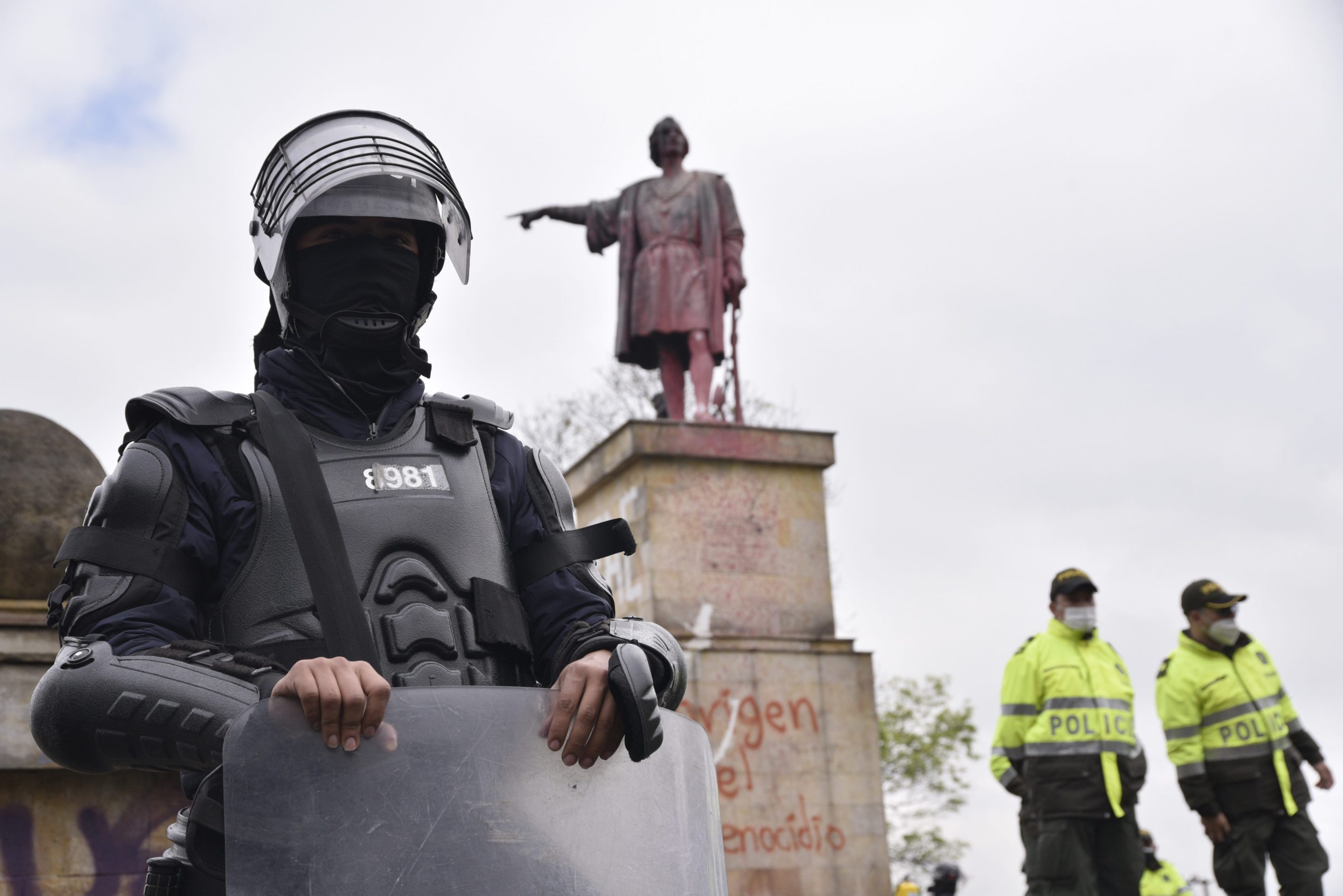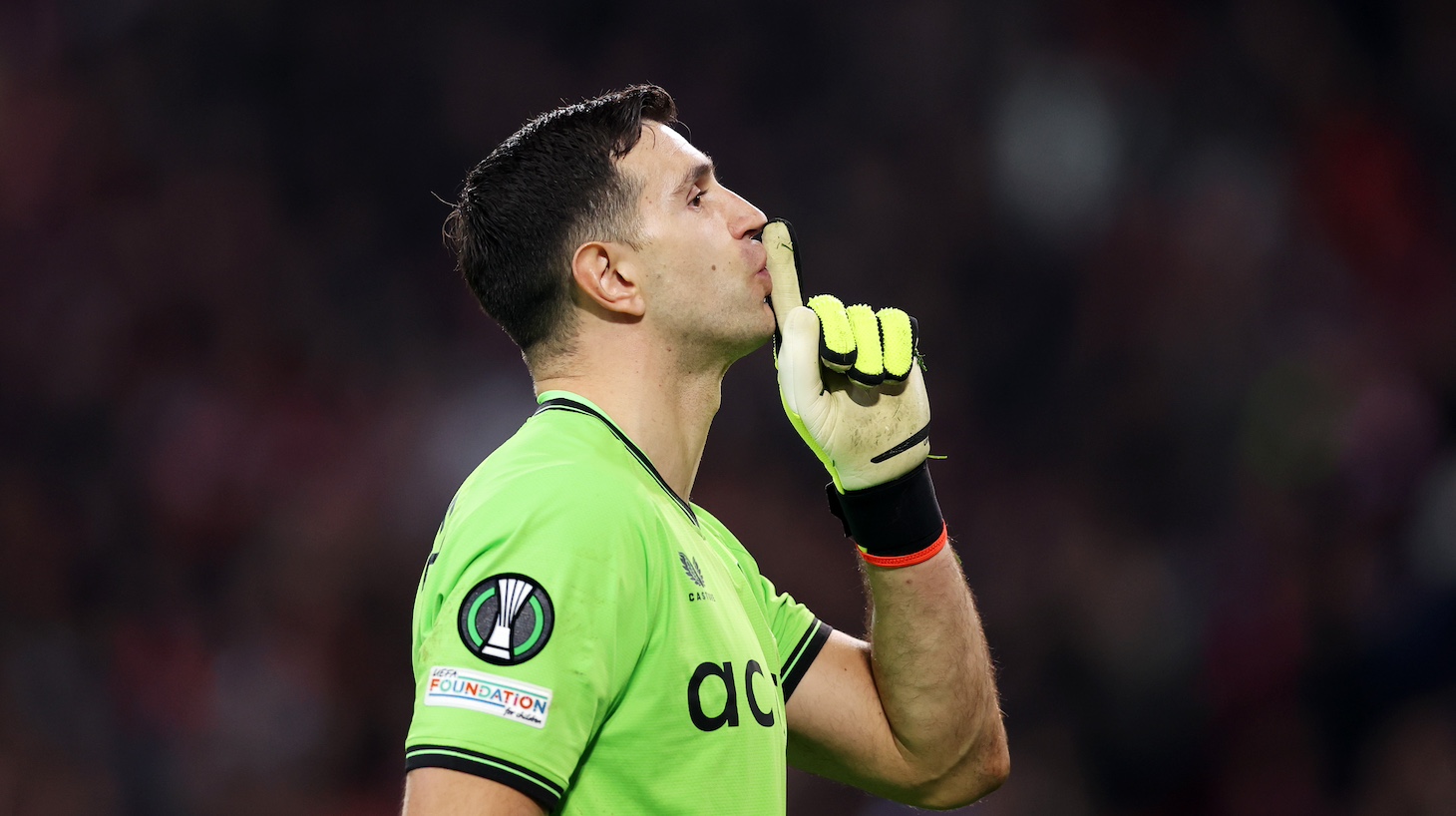Christopher Columbus And The Replacement-Level Historical Figure
1:37 PM EDT on July 28, 2021

Sometime in 1484 or 1485, the Genoese navigator Christopher Columbus pitched King João II of Portugal on his scheme for a westward voyage of exploration across the Atlantic to Asia. It would be a voyage of around 2,400 nautical miles, Columbus argued, and he’d be happy to undertake it on João’s behalf in return for some frankly outlandish rights to land claims and revenues on the other side of his voyage.
João was nobody’s fool, especially when it came to backing speculative long-distance ventures at sea, but he was willing to entertain Columbus’s plan. Profits were profits, after all. Portuguese caravels had already been making the long trip down the west coast of Africa for decades, edging further and further south. The revenues from these trips—in the form of gold, ivory, and enslaved men and women—provided much of the king’s wealth. By 1488, one of his subordinates, Bartholomeu Dias, would round the Cape of Good Hope and enter the southern reaches of the Indian Ocean.
The king submitted Columbus’s proposal to a panel of experienced geographers and navigators he kept on his payroll, people with deep theoretical and practical knowledge of the sea. The panel of experts laughed Columbus out of the room. This wasn’t because Columbus believed the world was round and they didn’t, or because they were hidebound traditionalists who couldn’t see the brilliance of his plan and the destiny waiting just over the horizon on the other side of the Atlantic. It was because Columbus was drastically mistaken about the size of the world.
Columbus was utterly convinced that the planet was about a third smaller than it actually is. João’s navigational experts, who had correctly calculated the size of the Earth, knew that he was wrong about this simple, foundational fact. And if Columbus was wrong about it, then he and his ships would run out of food and water at sea long before they ever reached the East Indies. Any investment would be wasted.
On top of that, João (and practically everyone else who came into contact with him) found Columbus abrasive and ignorant, wholly unaware of what he didn’t know, a walking late medieval example of the Dunning-Kruger effect. The Portuguese sent Columbus packing, and he spent the next half-decade desperately trying to scrounge up funding for his harebrained scheme. Through a relentless dedication to social climbing and networking, he eventually found the necessary money in 1492 at the court of the Spanish monarchs Isabella of Castile and Ferdinand of Aragon.
The rest, as they say, is history. Columbus landed in the islands of the Caribbean, did some sailing around, and returned home, utterly convinced that he had sailed all the way to the fringes of Asia. His letters announcing his discoveries made their way to the Spanish court and to the print-shops, where they were copied and disseminated by the thousands. Columbus was famous, the money for subsequent expeditions poured in, and the future course was set.
It’s easy to tell Columbus’s story as one of a determined innovator, triumphing over the backwardness and ignorance of medieval Europe to usher in a new era of global exploration, trade, colonization, and conquest through sheer grit and clarity of vision. That is all absolute nonsense, but it is a very easy story to tell.
Columbus’s crimes are, by now, well known: One of his first observations about the people of the New World was that they would be easy to conquer and enslave, and although some thousands of them might die in transport to their destinations, enough would still be left over to make a profit. Worse—much worse—followed, and he set the tone for the next several centuries of Spanish colonial domination of the Americas and beyond. He is not a hero, and might more easily and convincingly be cast as a villain; after all, the fact remains that it was Columbus who was there lobbying at the Spanish court, who was on the deck of the Santa Maria as it sailed west, and who reaped (at least initially) the rewards.
I have an alternative suggestion. Rather than casting Columbus as either the hero or the villain in an epic story about the emergence of a recognizably modern world, we should understand him as a replacement-level historical figure: not among the elite, a Clayton Kershaw or prime Carmelo Anthony; not in the mid-to-upper tier of his profession, like Nelson Cruz, Joe Flacco, or CJ McCollum. He was a notable step below that.
It is better and more accurate to think of Columbus as Bronson Arroyo or Nick Young or Trent Dilfer—an innings-eater, a bench player averaging nine points in 25 minutes of action, the guy handing off the ball to Jamal Lewis. This is strictly an observation about the context in which we should place him, and the people to whom he should be compared. Outside of his flamboyance and his tendency to bray loudly about what he perceived to be his own personal brilliance and destiny—the 15th-century equivalent of Arroyo’s Stone Temple Pilots covers or Young’s iconic GIFs—Columbus’s skill sets and attitudes were almost completely typical of the community of Mediterranean and Atlantic sailors to which he belonged. Columbus was remarkable, if he was remarkable at all, for how deeply unremarkable he was.
The types of experience and skills that sent Columbus out into the Atlantic and then safely home were widespread in his world. That, rather than any personal characteristic of Columbus himself, is the extraordinary and impactful thing we should strive to understand. There were dozens, hundreds, even thousands of potential Columbuses running around the bustling port cities of Europe in the 1480s and 1490s. And beyond the sailors themselves, there were shipbuilders who constructed sophisticated vessels capable of long-distance travel at sea, metallurgists who forged cannon, and the financiers whose command of complex mechanisms of credit and repayment paid for all of it. All these people should by rights be characters in the story if our goal is to explain why and how these voyages of exploration, trade, and conquest were launched, or why it was European caravels arriving at Calicut and Hispaniola rather than dhows or junks showing up in Lisbon and Barcelona.
That is a more difficult story to tell, though. It’s sociological rather than biographical, institutional rather than individual, and one in which actors like Columbus would be treated as representative rather than exceptional. But it’s a far more rewarding and far deeper way of understanding the past and the people who populated it. We don’t have to treat characters like Columbus as Great Men whose actions drove history forward. Nick Young won a title as a member of the Warriors in 2018, but we don’t understand the arc of that NBA season through Nick Young’s actions as the central character and driving force. Nobody’s out there trying to tell you that Bronson Arroyo invented pitching. Somebody else—not anyone off the street, but anyone in their tranche of utterly fungible professional peers—could’ve played Young’s bench minutes in 2018 or pitched Arroyo’s innings and the outcome wouldn’t have been that different.
Columbus was just a person, a representative of a broader Type of Guy who was common along the sea-lanes of the western Mediterranean and Atlantic in the closing decades of the 15th century. If we were to go back in time and pluck a sea-captain off the deck of a caravel or carrack in Lisbon or Seville or Genoa in 1490 or so, we would probably find him to be much like Columbus in most respects: maybe less convinced of his own impending greatness and a social rise into the nobility, maybe a bit less well-traveled, maybe better-liked by his crew and associates, but similar in most respects. His ideas about commercial profits, the use of violence in acquiring those profits, and the potential of enslavement to meet that goal were likewise pretty standard.
It wasn’t just Columbus. Vasco da Gama was a true psychopath who burned alive Muslim passengers on a captured ship in the Indian Ocean. Cortes and Pizarro slaughtered staggering numbers of people in their conquests of the New World empires. Amerigo Vespucci was probably a pimp and definitely a ruthless slaver. Those are just the headline-grabbers, the other people whose names you might know; they’re the tip of the iceberg. The conquest of the Canary Islands in the 1480s, financed by the same group of people who funded Columbus’s voyage in 1492, had been exceedingly brutal. This was the context that produced Columbus, the tradition to which he belonged and to which he contributed.
The sailors who made these journeys had experience making the voyages from Lisbon and Seville to Barcelona, Genoa, Naples, Tunis, Algiers, even Venice, Istanbul, and Alexandria. They worked the routes north to London, Bruges, Antwerp, Hamburg, Lübeck, and the Baltic. When they congregated, which they did in every port from Riga to Calais to Messina, they exchanged information about the winds and sailing conditions. Dozens of ships made the run south from Iberia to the Canaries and the great rivers of West Africa every year. Their captains knew the prevailing conditions there, just as Columbus did. Rather than hugging the coastline, Portuguese ships were already swinging far west out into the Atlantic to find the favorable winds that would carry them quickly to their southern destinations; such a swing would eventually lead a Portuguese fleet to landfall in Brazil in 1500.
Columbus traveled the same shipping routes as the other sailors of the Mediterranean and Atlantic. He had a wider breadth of experience than most, having been as far east as the Aegean, north to England, and south to West Africa, but no voyage he had undertaken was out of the ordinary. Even Columbus’s basic idea, the one for which he’s famous, wasn’t unique to him: João II of Portugal backed someone else who tried to sail west, a Fleming named van Olmen, a couple of years after he rejected Columbus’s plan. (João presumably found van Olmen less personally objectionable than the Genoese navigator.) Scholars had long hypothesized the existence of another landmass between Europe and the Americas, which they called the Antipodes, or at least the presence of more islands, like Madeira and the Canaries. For many observers, Columbus’s insistence that he had reached the Indies was obviously wrong from the very beginning; he had simply found the Antipodes.
Columbus wasn’t a unique visionary. Put any of those other captains in the same place, with the same ships, and the outcome would’ve been pretty much the same. His only real insight was that sailing south to the Canaries to pick up favorable winds before heading west was the right course, and enough sailors were taking that southward journey—dozens of ships every year—that somebody else would’ve figured out that specific detail before long.
In the grand sense of historical causality—why things happen over days, months, years, decades, and centuries—most of the historical figures we’re familiar with are actually completely replaceable. Nothing meaningful would change if you substituted someone else of the same social class and cultural background for that famous figure whose name we had to learn in an eighth-grade history class.
Major League Baseball is awash in pitchers who can throw five innings of three-run baseball every five days. The pitches they throw might look different, but it doesn’t really matter whether you’re starting Bronson Arroyo or Jason Vargas or Mike Leake or Chase Anderson 30 times in a season. There are plenty of lanky wings in the NBA who can shoot 33 percent from three and play a little defense; Kent Bazemore, Mo Harkless, Al-Farouq Aminu, and Reggie Bullock are all variations on the same theme. Mike Shanahan figured out a long time ago that he could find a competent running back to carry the ball 300 times a season in the draft’s late rounds, and NFL coaches have been following that example for two decades now. In the admittedly rarefied context of the incredible baseline levels of skill and athleticism required to play at that level, these people all basically interchangeable. The same is true of Columbus in the 1480s and 1490s.
The version of Columbus we’re familiar with is a character in a very particular kind of story that people have told about that specific slice of the past. It’s a story that eventually leads to European colonial domination of the New World and global empires in the 19th and 20th centuries—which a priori must have been a good thing, because those things produced the world in which schoolkids learn about Christopher Columbus. In a version of history reverse-engineered to justify and celebrate the present, Columbus can only have been a hero, a singular and unique character whose actions drove the story to where it always needed to go. If that heroic Columbus didn’t exist—and again he very definitely didn’t—then he must be invented in order to play the role in which he’s cast.
This is the heart of what we call “Great Man History.” It’s history as a narrative, in which the core characters play a central role in driving forward, through sheer force of will, all the events that move the broader world. When we put it in these terms, it seems like an obvious oversimplification, a clearly flawed way of understanding why things have happened in the past, and yet it’s essentially the default way that most people engage with history. When history textbooks toss out the names of kings (occasionally queens or popes) and key dates, to be learned by rote memorization, they’re cropping the complex, messy sweep of the past to fit into a much smaller, neater frame. The causal mechanism on which this kind of history focuses are the individual actions of people like Columbus, because that makes the narrative digestible and memorable. Instead of things happening for the reasons they actually happen—humanity carried along, mostly by accident, on the current generated by the confluence of natural and social and political forces—they happen because one man makes it so.
Sports, as it happens, are great fodder for stories, larger-than-life characters doing heroic things against insurmountable odds. But the stakes in narratives about the past—the kinds of stories that give mediocrities like Columbus a central historical role all these centuries later—are much higher than any self-absorbed Sports Guy’s yarn about the glories of the 2004 Red Sox. Sure, Columbus was there in 1492. He did some stuff, bent some ears, sailed some ships, wrote some letters. So did Bronson Arroyo in 2011; he soaked up some innings and gave up some dingers (2.08/9 innings pitched, which, oof).
In no meaningful way was Bronson Arroyo a key player in the grand scope of the 2011 MLB season, much less the history of 21st-century baseball as a whole. Making Columbus the linchpin of a story about European global expansion at the end of the 15th century, much less a major player in the greater story about the grand scope of a historical shift that made Western Europe the dominant region on the planet, is committing this same basic, cardinal sin.
Stories are abstractions and approximations, tools that help us make sense of a complex, messy, and wildly disordered historical reality. Their creators pick and choose some events for inclusion over others and place them in a structure that attributes them to characters, both heroes and villains. The events chosen, the roles picked for the characters, and the themes emphasized all combine to give these stories the function of justifying specific ways of understanding the past, courses of action taken long ago, and the importance of groups that claim descent from past heroes in the present. Columbus and the story of his voyages west into the Atlantic are perhaps the quintessential example of this. They serve the present, not the past; any history that puts him at the center of any story would just for that reason contribute nothing to an actual understanding of the forces that swept people from Western Europe to the furthest reaches of the globe beginning in the late 15th century.
There’s nothing inherently wrong with telling a story about an individual or small group and their role in some event or process. That’s why Band of Brothers is, for my money, incredibly compelling: ordinary people doing extraordinary things in the context of a conflict much larger than any individual or group. I had Bronson Arroyo on my (terrible) fantasy baseball team in 2011, and spent an inordinate amount of time smoking reefer on a hot couch in a hot apartment watching him throw 5.2 innings of four-run ball and wondering why he didn’t strike anyone out. That’s a story, too, and one in which Arroyo is a prominent if unlikely character. Sure, Columbus sailed the ocean blue in fourteen-hundred-and-ninety-two, but there were lots of people sailing in 1492. Swap out Columbus with any of them, and we’d still be right here.
To make Columbus a hero is to give him too much credit, but so too is making him out to be some unique villain. For the same reasons, treating him and the destruction he wrought as the product of his own individual agency, or some unique character flaws, is to misunderstand the mechanics and agency not just of how bad things happened in the past, but how they happen now. Conquest, enslavement, and mass death were the product of institutions, incentives, and sets of social and cultural norms that transcended any individual’s character flaws. Evil is more likely to come from random assholes doing what they perceive to be their job—to pay the mortgage, generate returns for investors, or in Columbus’s case, climb into the nobility—than some virtuosic psychopath single-handedly inflicting terror on the world.
That’s a far more fitting epitaph for Columbus than either heroism or villainy. He was Just Some Guy, the product of a knowable world that produced many such people, and not a particularly outstanding figure at that. Ironically, that label would offend Columbus far more than even villainy. For someone who was always convinced that he was destined for great things, reducing him to just one among a crowd of replacement-level figures would be the most intolerable fate of all. He deserves nothing more, or less.
If you'd like to hear more about Columbus and some other replacement-level historical figures, along with a couple who maybe weren't, check out Patrick's new book The Verge: Reformation, Renaissance, and Forty Years that Shook the World, available here. Patrick also read the audiobook of The Verge, available here, which he recorded in the same audio booth where Lil Wayne recorded much of his masterpiece album Tha Carter III. You can read an excerpt of The Verge here on Defector.
If you liked this blog, please share it! Your referrals help Defector reach new readers, and those new readers always get a few free blogs before encountering our paywall.
Stay in touch
Sign up for our free newsletter




